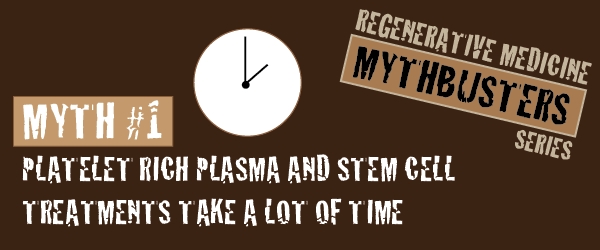In the veterinary hospital, a major component revolving around the integration of a new therapy is time. How long is the treatment going to take? How many personnel will need to be scheduled to administer the therapy? How long does the patient need to be under sedation (if needed)? How long does the patient need to be in recovery?
The old saying “time is money” certainly has its place in the veterinary hospital. If a procedure requires several technicians and takes numerous hours to perform for treating one patient, that may not be an efficient use of the hospital’s or technician’s time. In the early years of regenerative medicine, many of the therapies required numerous anesthetic episodes and several hours of both the technician’s and doctor’s time. The procedures required a dog to be anesthetized to collect the sample and then return in a separate hospital visit to be administered the therapy. The collection of the tissue and administration required the doctor to be scheduled for two surgical procedures as well as the attending technician(s). In total, the time to perform this therapy could easily approach 2 hours of doctor and technician time combined, which would then necessitate a higher fee for the single therapy to cover the overhead costs. For many customers, the combination of the numerous office visits and cost of the procedures would be prohibitive, making this therapy less appealing.
Today, these therapies have become extremely efficient only requiring a single office visit with processing and administration taking less than 30 minutes. For Platelet Rich Plasma (PRP) the process takes even less time (typically 15 minutes from start to finish) with most of the procedure being performed by the attending technician(s). The steps for processing PRP are quite simple, making it a therapy that can be easily cross-trained for the supporting staff. The doctor’s time is only required for the administration of the therapy, which takes less than 2-3 minutes (depending on the number of areas being injected). With this minimal time requirement, providing regenerative therapies can easily be scheduled in-between other procedures, exams or surgeries.
To hear a first-hand account of how the Companion Regenerative Therapies System benefited a general practice and their schedule:
Stay tuned for our next blog post where we “bust” another regenerative medicine myth!




